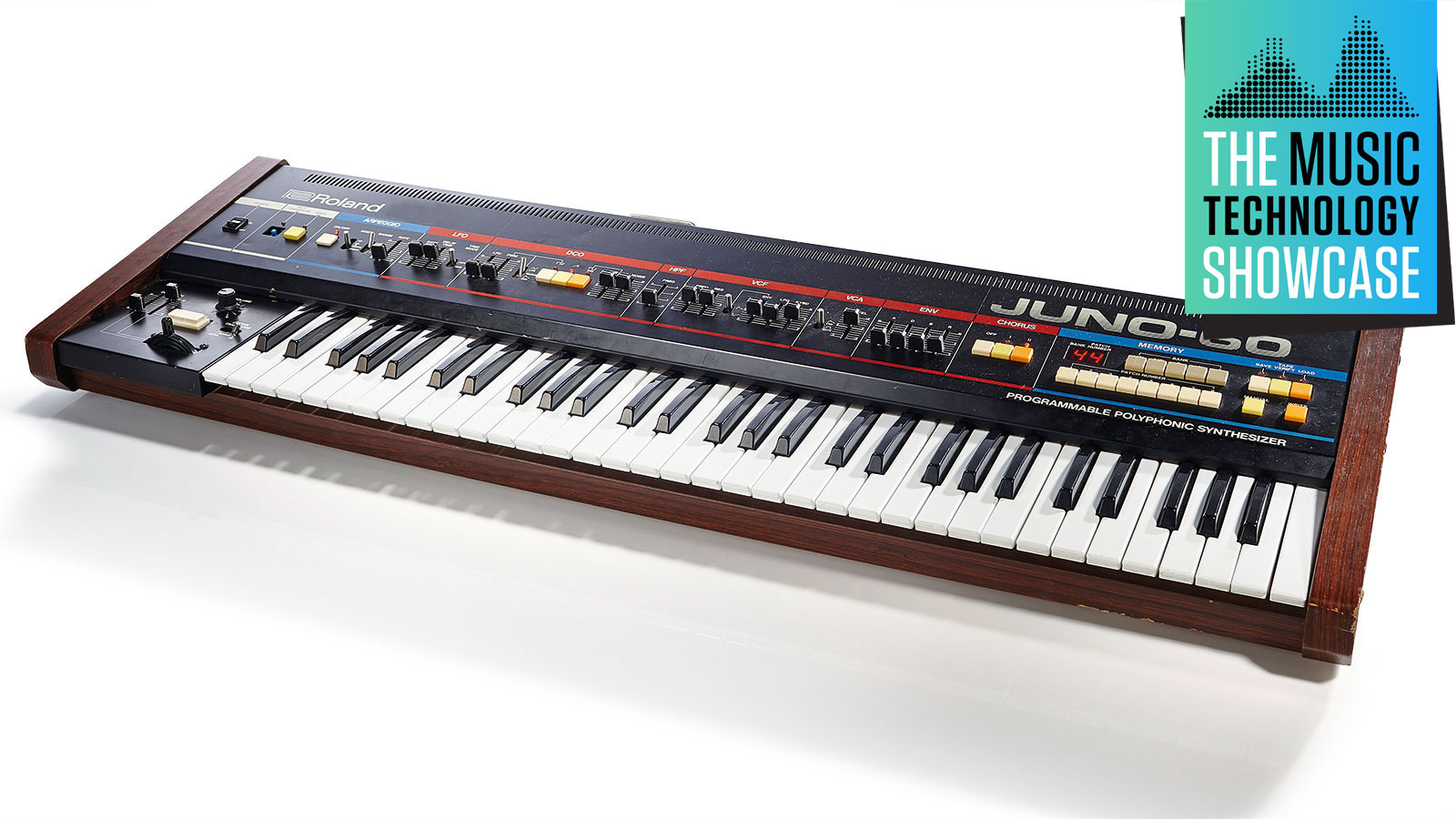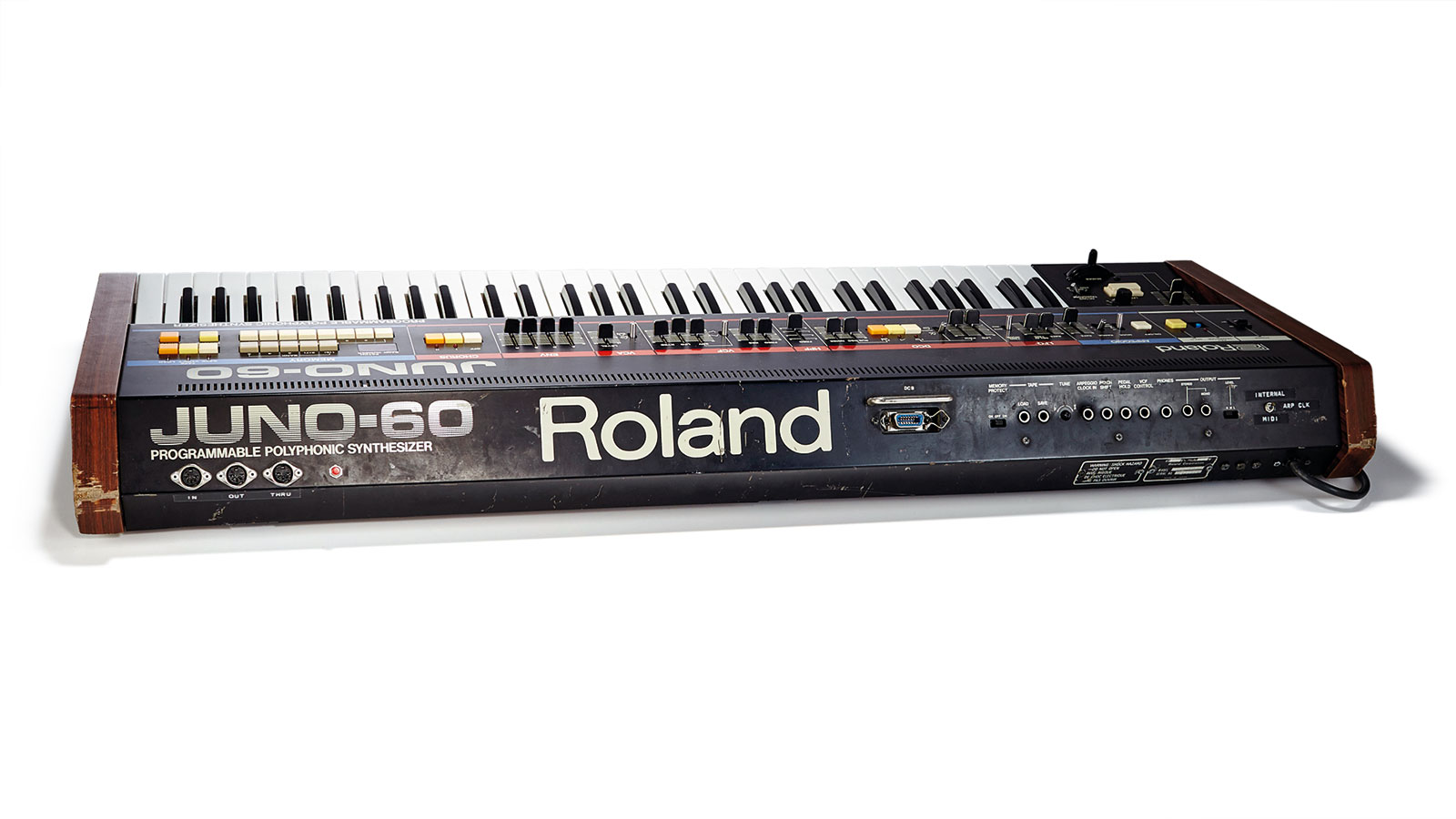Vintage music tech icons: Roland Juno-60
We go back to 1982, to the affordable polysynth war that led to Roland’s ‘diet Jupiter-8’…

Music Tech Showcase 2021: These days, we’re spoiled. Back in the late ’70s there was really no such thing as an affordable polysynth. Synths were expensive, damn it – the domain of our musical idols and successful dentists. And polysynths? Forget it. The best we could hope for were string synthesizers which were lovely in their own twee way.
In 1981 Roland released their grandest polysynth yet – a jaw-dropping new eight-voice named after the King of the Gods. The Jupiter-8 was a beast, with patch recall and a price ticket to match: $5,295. That was nearly 38% of the national US average wage at the time. And then that very same year, Korg unveiled their Polysix.
This was a stunning product, as it was a true six-voice analogue polysynth, with patch storage, but which cost a ‘mere’ $1,095. Roland must have been gobsmacked, and were left with an enormous gap to make up. Distilling technology from the Jupiter, they scrambled to plug it, initially with the Juno-6. Which didn’t have patch memory. So in late 1982, a new Juno-60 finally arrived.
It pares down your options to the bare minimum, which excludes it from sonic bug-outs, but means that nearly every sound you can make on a Juno is musical and usable
At long last, Roland had a simple but ‘affordable’ six-voice polysynth, with 56 memory slots onboard, to compete with the Polysix. Though it was a pricier $1,795 (£999), it was close enough.
Then in 1983 the Yamaha DX7 arrived and spelled the doom of all analogue synths. The Juno-60 and its successor the Juno-106 were consigned to the bargain-bin of history. Except, they weren’t. Where Juno-106’s voice chips go senile, 6 and 60’s truck on, pretty reliably. But that’s not the only reason people still buy and love them.
For that there are two reasons. Number one – as the DX7 showed – you can have all the control in the world, but that doesn’t mean you’re going to make a decent noise. Some synths are hard to master.
What the 60 (and 6) do so well, is to pare down your options to the bare minimum, which excludes them from modular-grade sonic bug-outs, but means that nearly every sound you can make on a Juno is musical and usable. They just don’t make bad sounds. You don’t even need to use the patch memory.
Get the MusicRadar Newsletter
Want all the hottest music and gear news, reviews, deals, features and more, direct to your inbox? Sign up here.
Want a face-melting long-release glittering arpeggio? Flick-flick-flick. It’s there. Sounds amazing. Now we need some sick woozy Boards of Canada pads. Flick-flick-flick. Done, and now you're crying. Here, have the ‘Roygbiv’ bass sound, too. Flick-flick-flick. Orange! You can work incredibly quickly on a Juno 60. Programming becomes muscle memory, and it always sounds great.

Superb sounds
And that’s the second reason which cannot be overstressed. Juno-60’s sound fantastic. Like, fantastic. They make enormous bass, they make amazing pads, they make spooky arpeggios which you can sync with a loud audible ‘click’ sound fed into the Arp Clock input.
They sound like old Electro records. They sound like ‘diet Jupiter-8s’. Which makes sense since if you pop the handy hinged lid (made to be fixed, Ladies and Gents), you’ll see six proprietary Roland IR3109 VCF chips inside. The very same filter chips in the Jupiter-8.
It pulls synth-loving hearts in all the right directions, it makes visitors furrow their brows and say, “Bloody hell. That sounds good, doesn’t it?”
That filter has this strange sort of ‘bite’ to it; at high resonance it rings with a distinctive formanty ‘ahh-ooo-euhh’, a sort of ‘squawky’ vocal quality. It’s a sharp 24dB design and can do squelchy acid too. Physically they’re tough and with nicely resistant faders which are easy to ‘read’.
Architecturally there really isn’t much to it. It has a square wave (with PWM), a saw, noise and a -1 octave square sub osc, all available simultaneously, one ADSR (from the Jupiter-8 also), one triangle LFO with handy mod sliders dotted around, a lovely clockable arpeggiator and ‘that’ chorus section.
The chorus was there to fatten up the single oscillator, and has two rates. It is noisy as they say, but it’s vibey and very stereo-rific, plus you can push both buttons at once for a sort of ‘mono-collapsed’ chorus.
Lastly you have a side-to-side bender joystick which lets you modulate pitch and filter settings, which gets very Prince very quickly when you use it on chordy stabs. That’s largely it. You have ‘Hold’ which lets you stack up notes for drones, or complex arpeggios, and in combination with the Key Transpose button lets you perform a sort of Chord Memory trick.
Give it a detune
One of the Juno’s hallmarks was its pitch stability, a feature of its digitally controlled oscillators. And if there was only one modern criticism to level at it, it’s that it’s almost too stable!
This precision contributes to its ‘classy’ sound, but the beating VCO effect of pitch instability is one of the things that make beasts like the CS-80 so otherworldly and enormous.
What’s important to note is that its oscillator outputs are not digital, they’re 100% analogue waveforms waveshaped from a digital clock. Look up the Tubbutec ‘Juno-66’ mod kit for several modern benefits, including MIDI, but most strikingly for its ‘detune’ mode, which imparts magically woozy ‘vintage’ pitch instability and sounds genuinely extraordinary.
The Juno was named after the Queen of the Gods, the wife of Jupiter, and there are some remarkable similarities between those two machines. It’s not as complex, but that makes it easier to use – and even if Junos are getting expensive now, they’re still cheaper than Jupiter-8’s. And every single tone in a Juno-6/60 is worth recording.
A musical workhorse, a source of instant gratification – always inspiring, it pulls synth-loving hearts in all the right directions, it makes visitors furrow their brows and say, “Bloody hell. That sounds good, doesn’t it?” Yes, it does. And you never want to be without it.
Verdict
Simple, instant, and every sound it makes is gorgeous, glorious and usable. A truly great synth.
Original RRP £999| Used from £650
Buying a used Roland Juno-60
A few tips before dropping your cash on a second-hand (uh, more like seventh-hand) unit…
1. Don’t buy unseen or uninformed.
Read the manual thoroughly first (Google it), and get the Service Manual too so you know on contact what each setting should do, and how it should sound, and how to access its voice test mode. Ideally, find someone with a working one and get familiar with that first.
2. Be wary of chassis damage.
A bashed unit can have internally cracked PCB (avoid), or cracked solder joints leading to intermittent functionality. Cracked solder joints are easily fixable if you spot them, by ‘reflowing’ with a hot soldering iron.
3. Crackly pots and sliders can be cleaned.
It’s very likely that the rotary volume pot (and probably filter sliders) will be crackly with age. As with any bit of gear, crackly pots and faders can be cleaned and refreshed easily with Caig DeoxIT and/or Fader Lube spray (pricey, but worth it).


Future Music is the number one magazine for today's producers. Packed with technique and technology we'll help you make great new music. All-access artist interviews, in-depth gear reviews, essential production tutorials and much more. Every marvellous monthly edition features reliable reviews of the latest and greatest hardware and software technology and techniques, unparalleled advice, in-depth interviews, sensational free samples and so much more to improve the experience and outcome of your music-making.










